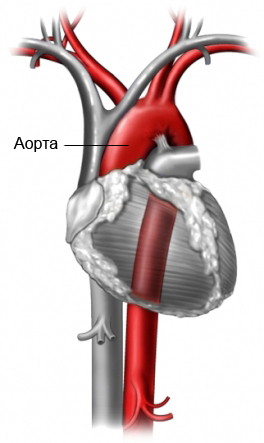Coarctation of the aorta in adult
Description of the aorta coarctation in adults
The aorta is the main artery, which carries oxygen-rich blood from the heart to the body. Coarctation of the aorta – narrowing of the aorta, which slows down or blocks bloodstream. The disease is often associated with other cardiovascular disorders, such as heart valve abnormalities or bulging blood vessels (Aneurysm), that can cause additional problems in the future.

The reasons for the aortic coarctation in adults
Coarctation of the aorta is a congenital heart disease, meaning, that it is present at birth. This is due to problems with the development of the aorta, when the fetus develops in the womb.
Risk factors
Factors, which increase the likelihood of aorta coarctation in adults:
- Paul: male;
- Syndrome Ternera;
- Anomalies of the aortic valve.
Symptoms of aorta coarctation in adults
Coarctation of the aorta may not cause any symptoms. These symptoms can also be caused by other diseases. You must inform your doctor, if they came any:
- High blood pressure, especially at a young age;
- Cold feet;
- Breathlessness, especially during physical exercise;
- Dizziness;
- Feet cramps after sports;
- Headache;
- Fatigue;
- Bleeding from the nose;
- Fainting;
- Chest pain.
Diagnosis of aorta coarctation in adults
The doctor asks about the symptoms and medical history, conducts a physical examination. Tests may include the following:
- Chest X-ray – to take a picture of structures inside the chest;
- Magnetic resonance imaging (MRT) hearts – test, which uses magnetic waves, to take pictures of structures inside the heart;
- CT scan (CT) hearts – type of X-ray inspection, wherein the computer is used, to take pictures of structures inside the heart;
- Echocardiogram – test, which uses high-frequency sound waves (ultrasound), to examine the size, shape and motion of the heart;
- Heart catheterization – special tool inserted into the heart through a vein or artery (usually in the arm or leg), to detect problems with the heart and its blood supply.
Treatment of aorta coarctation in adults
Treatment options include the following:
Surgery
The narrow part of the aorta can be removed surgically. After that, the healthy ends of the aorta are sewn.
Ballonnaя angioplasty
A small pipe-chatter is inserted into the blood vessel in the leg and moves to the aorta, where a small balloon is inflated (balloon), To expand narrow areas. A stent can be placed in the problem area, to keep the aorta open.

Prevention of aorta coarctation in adults
Because aortic coarctation is a congenital disease, methods of its prevention does not exist.
